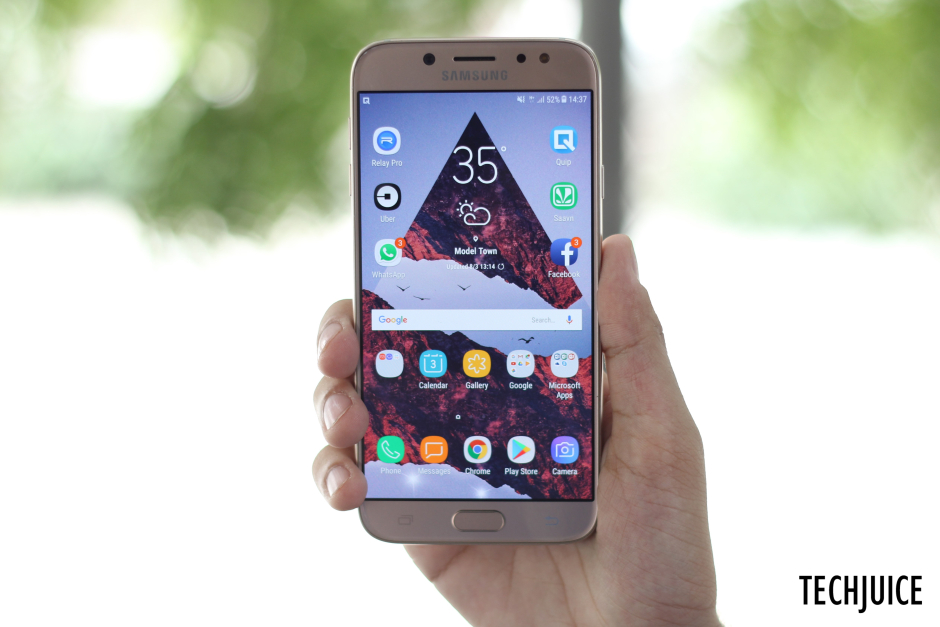Samsung isn’t known for producing very cheap or cost-effective phones, at least not these days. What it is known for is cramming very good build quality, brilliant screen and very decent cameras in almost all the phones that they manufacture. This is the consensus in almost all the Samsung phones that we have reviewed in the past. Galaxy J7 Pro is expected to leave the same impression towards the customers.
Before I move on towards the detailed Samsung Galaxy J7 Pro review, let me make something clear. Do not be fooled by the pro branding on this device. This isn’t some super-charged or incredibly beefed up version of the J series of devices. It could easily have been called J7 (2017) and no one would have been too surprised by the offering. Here are the specifications offered by the Galaxy J7 Pro:
- 5.5- inch FullHD (1920 x 1080p) AMOLED display
- 3GB RAM and 16 GB internal storage capacity with microSD card support of up to 256 GB
- 3600mAh non-removable battery
- 1.6GHz octa-core Exynos 7870 processor with Mali-T830MP2 GPU
- Android 7.0 Nougat with Samsung Grace UI
The good, the bad, and the ugly
Each device has some good points and some negative points. The features which help this device stand out from the crowd are:
- Brilliant display quality
- Good battery life
- Great camera experience
- Premium build quality
Despite these points, there are still some issues which must be kept in mind before you decide to purchase this device.
- No fast charging support
- 16 GB internal storage in base model
- Price seems a bit high for the whole package
Unboxing experience
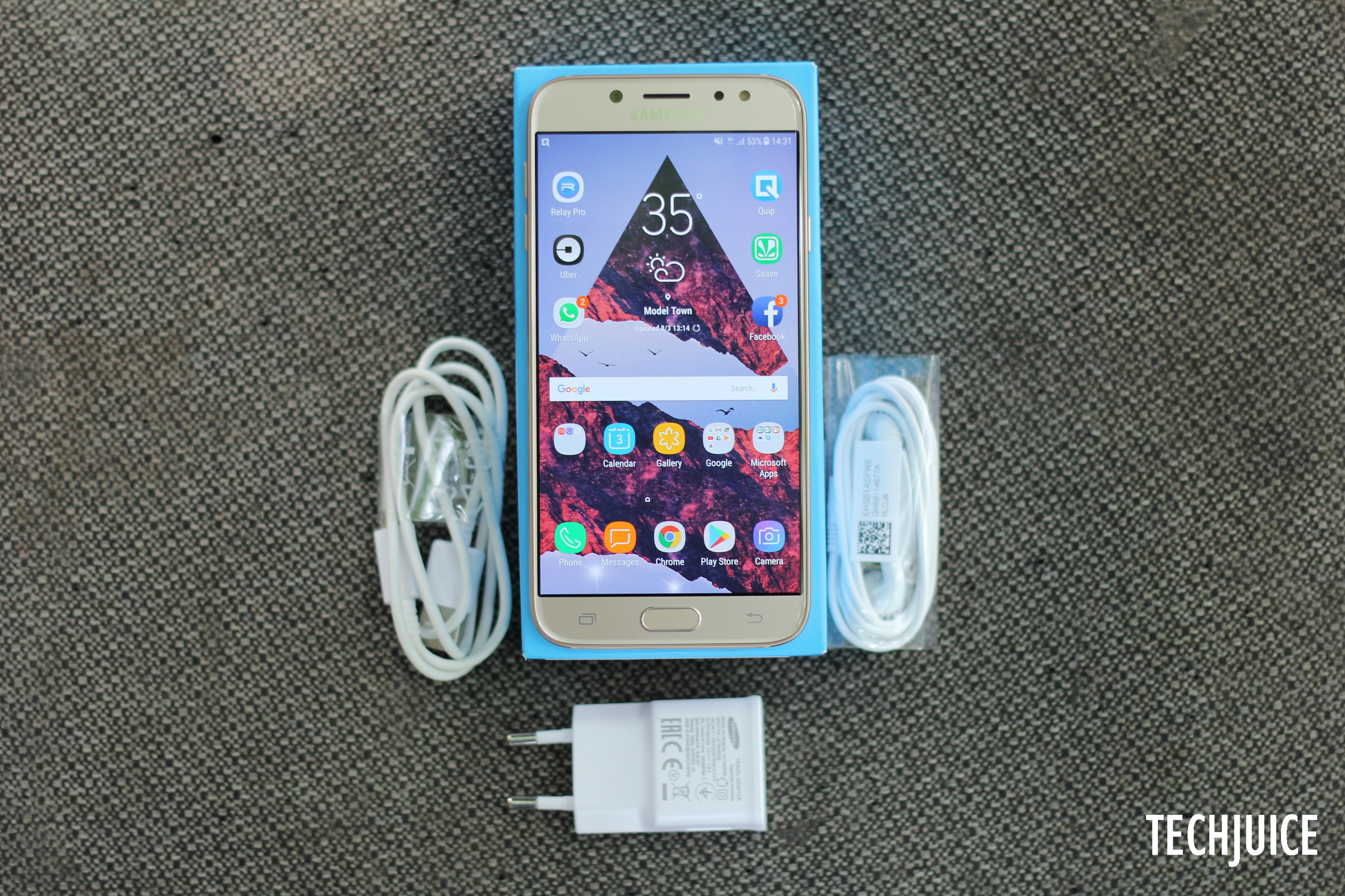
Like most Samsung phones, the contents of the box are minimal and you only get the essential items to get your device up and running. Here’s a detail of all the items available to you after opening the Galaxy J7 Pro box:
- 5V/1.5A charger (no fast charging support)
- Standard length USB-A to micro USB cable
- 3.5 mm Handsfree with microphone and call accept/reject button (no volume control buttons)
- SIM card eject tool
- Warranty and product information
Design and build quality
If there is one thing which can be attributed to Samsung phones of the past couple of years, it is their exceptional build quality. This device, with its part glass, part metal design, does not disappoint in that department either.
The front of the device is full glass and has the usual three key system used by Samsung devices. The whole front panel is covered by Gorilla glass of unknown specification. It extends beyond the display over the front camera, front flash, and the earpiece.
[I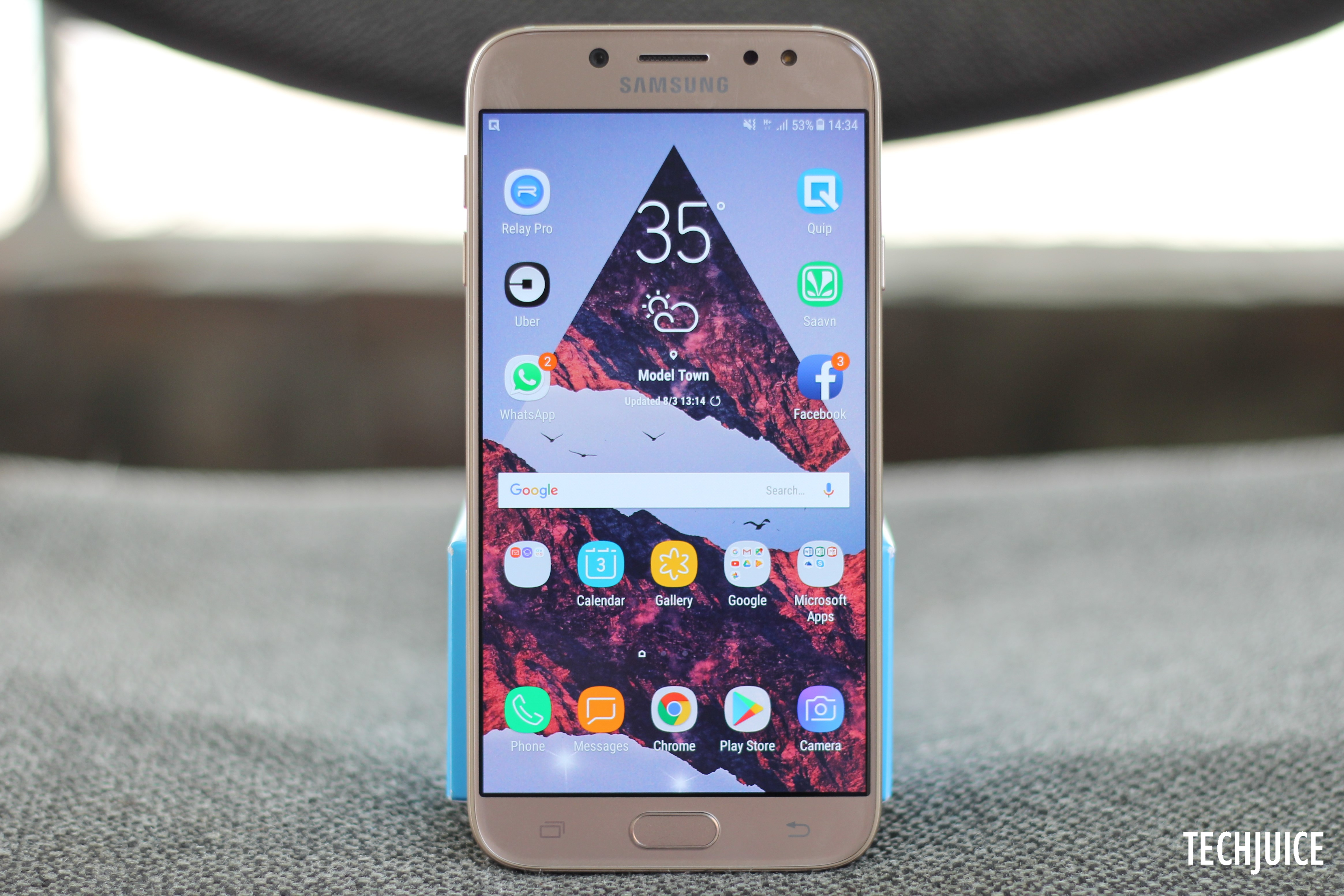 The backside of the device is all metal and has two antennas on the top and bottom for better signal reception. There is a 13 MP camera along with a flash on the backside which is accompanied by a carved Samsung logo. There is Duos branding below that which indicates the dual SIM nature of the device.
The backside of the device is all metal and has two antennas on the top and bottom for better signal reception. There is a 13 MP camera along with a flash on the backside which is accompanied by a carved Samsung logo. There is Duos branding below that which indicates the dual SIM nature of the device.
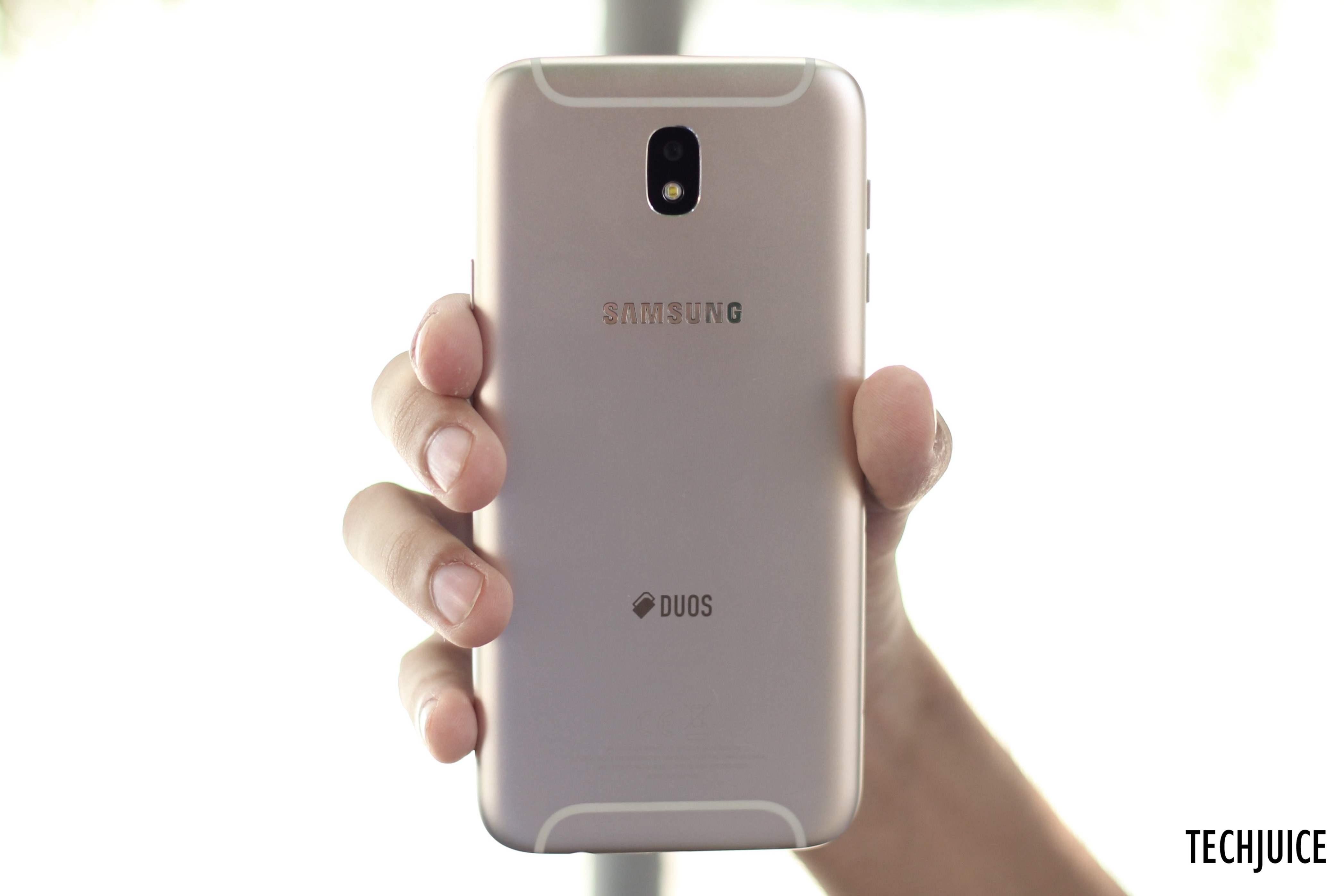 The sides of the device are a pretty standard affair for a Samsung phone. The right side has the tiny slit for the loudspeaker and the power/lock button. The left side has the volume rockers and slots for two micro-SIM cards and a microSD card. There is nothing on the top side which means that the bottom is busier than other devices. The bottom side houses the 3.5 mm headphone jack, the microUSB port and the main microphone.
The sides of the device are a pretty standard affair for a Samsung phone. The right side has the tiny slit for the loudspeaker and the power/lock button. The left side has the volume rockers and slots for two micro-SIM cards and a microSD card. There is nothing on the top side which means that the bottom is busier than other devices. The bottom side houses the 3.5 mm headphone jack, the microUSB port and the main microphone.
 Both the design and the build quality of the device screams premium from every angle. There are absolutely no quality control issues with the device and this aspect of the whole offering justifies the price tag stamped on it by Samsung.
Both the design and the build quality of the device screams premium from every angle. There are absolutely no quality control issues with the device and this aspect of the whole offering justifies the price tag stamped on it by Samsung.
Display
As mentioned at the start of the review, Samsung phones are typically known for their good displays. Galaxy J7 Pro is no exception. Its FullHD AMOLED screen is perfectly suitable for a phone in this price range. It offers good color reproduction, very deep black levels and accurate contrast. On top of that, the display is very sharp with a pixel density in excess of 400 ppi. Considering the price range, there is absolutely nothing which I can say bad about the display.
A benefit of the AMOLED panel is that Samsung can pack in some goodies like the Always on Display. What this does is keep the display on in a low power mode and provide useful information like the current time, battery percentage, pending notifications, media controls and much more.
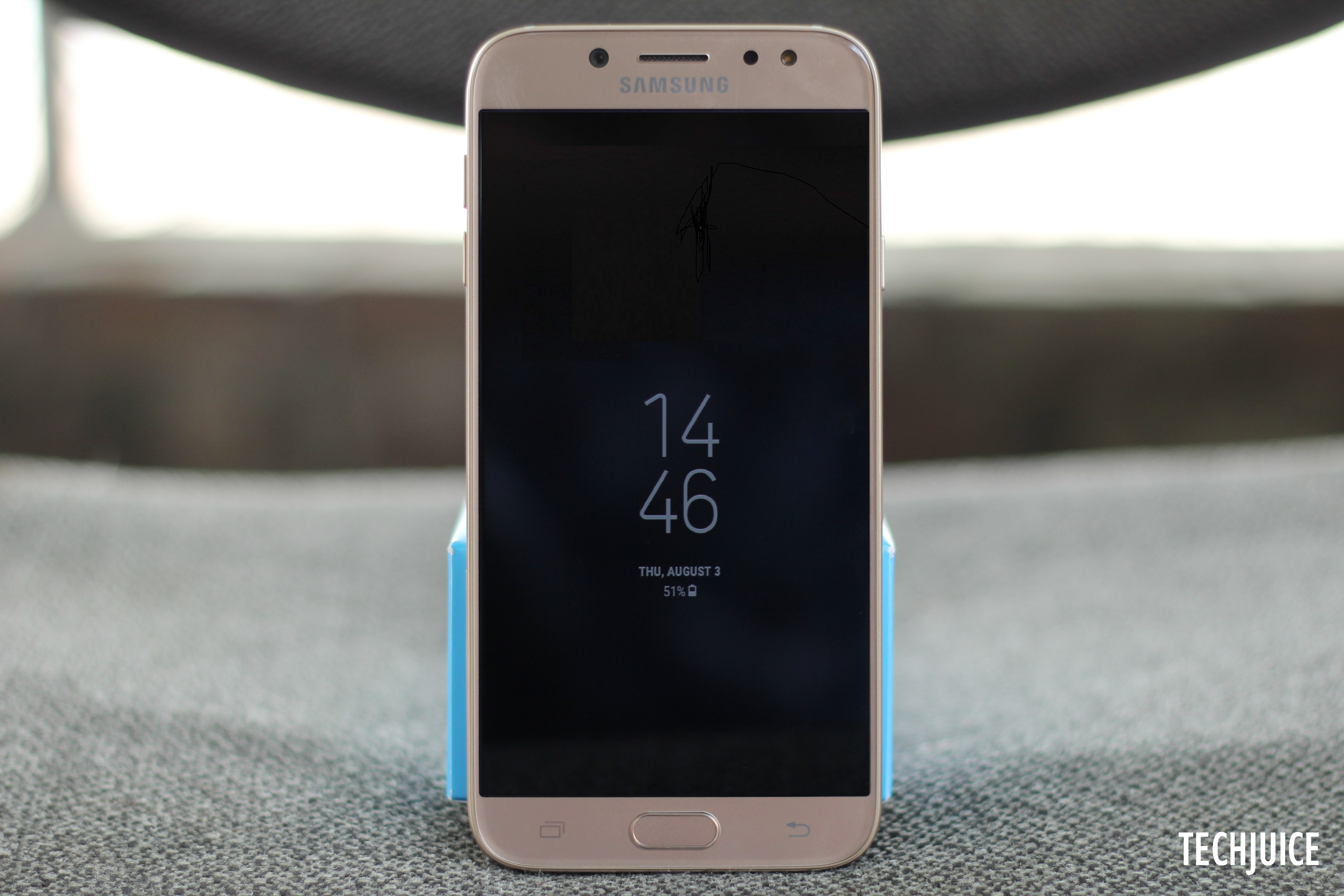 The feature is very similar to Glance feature provided in Nokia Lumia phones of the past and certainly works very well. You can customize it to show a blank screen with text or show some custom wallpaper. Users can also choose to display an analog or a digital clock along with a simple calendar view.
The feature is very similar to Glance feature provided in Nokia Lumia phones of the past and certainly works very well. You can customize it to show a blank screen with text or show some custom wallpaper. Users can also choose to display an analog or a digital clock along with a simple calendar view.
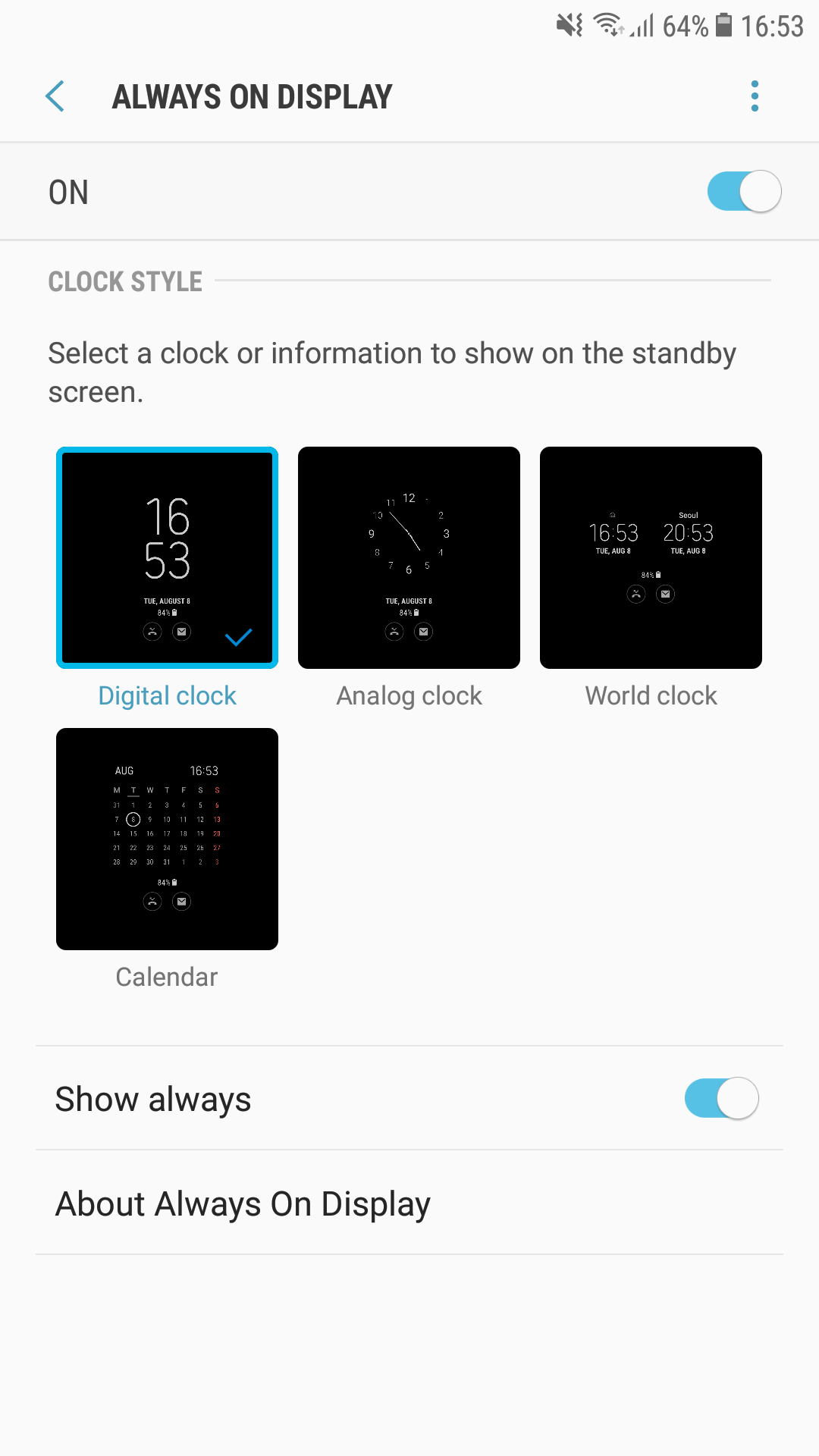
Software experience
With the launch of Galaxy S8 and S8+ earlier this year, Samsung debuted a new and improved user experience. Known internally as Samsung TouchWiz Grace UI and simply dubbed as Samsung experience throughout the device, it is the simplest UX by Samsung yet. It’s stable, fast, easy to use and looks pretty clean. Overall, the software experience on Samsung has evolved a lot since early TouchWiz days.
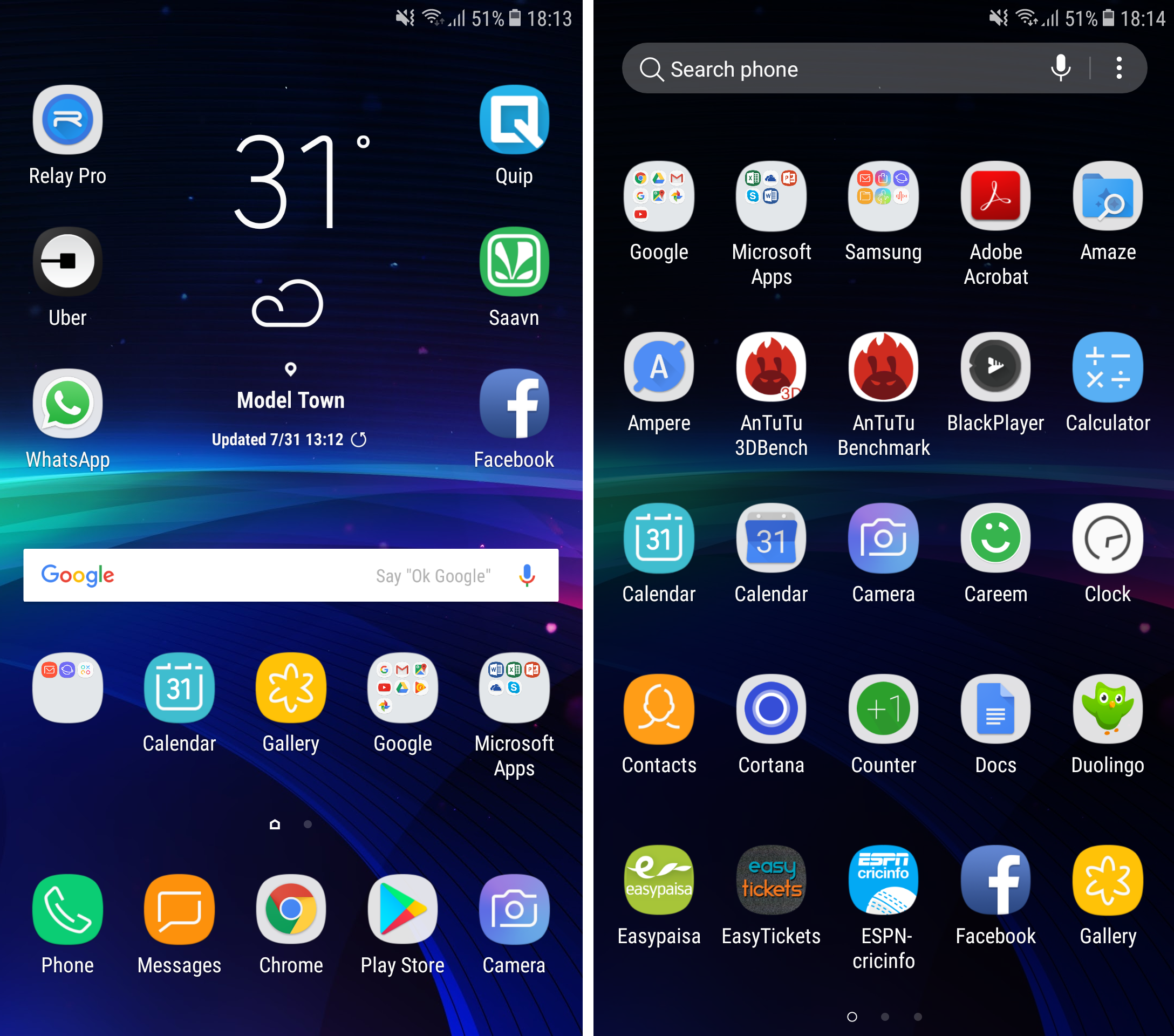 J7 Pro is the first mid-range phone to feature this new Samsung software experience. It runs pretty well on the provided hardware and there doesn’t seem to any stability issues or rough edges. Its minimal user interface is easier on the eyes and takes the focus off of the experience and shifts it more towards the actual applications.
J7 Pro is the first mid-range phone to feature this new Samsung software experience. It runs pretty well on the provided hardware and there doesn’t seem to any stability issues or rough edges. Its minimal user interface is easier on the eyes and takes the focus off of the experience and shifts it more towards the actual applications.
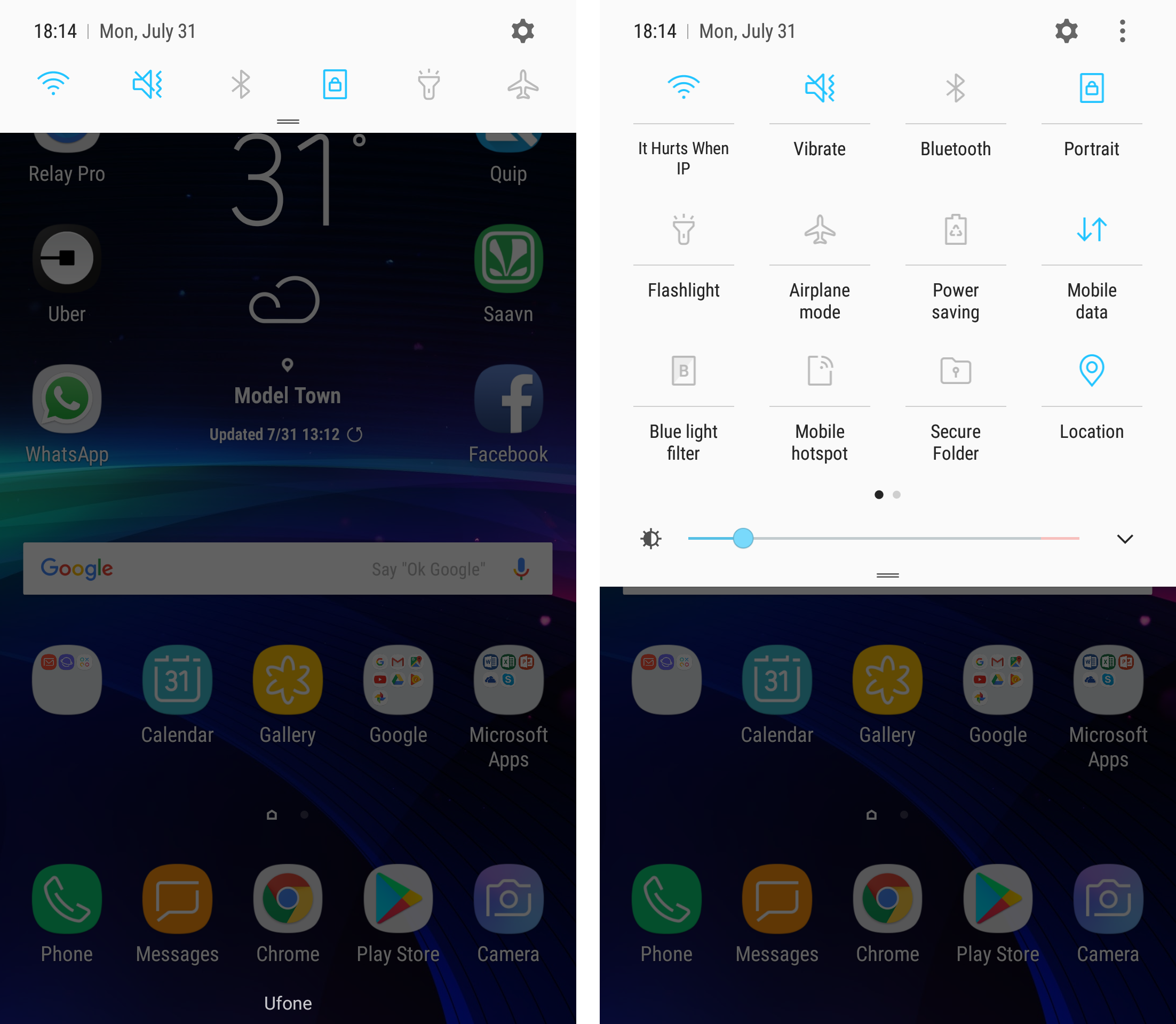 Along with the visual improvements, there are a number of features which have been added to the overall experience. Samsung has added a dedicated theme store from where users can download and install new themes, icons, and wallpapers to customize their phone to their own choices. There is also a device maintenance application which keeps track of resources being consumed and frees up RAM and storage by removing unwanted files and applications running in the background.
Along with the visual improvements, there are a number of features which have been added to the overall experience. Samsung has added a dedicated theme store from where users can download and install new themes, icons, and wallpapers to customize their phone to their own choices. There is also a device maintenance application which keeps track of resources being consumed and frees up RAM and storage by removing unwanted files and applications running in the background.
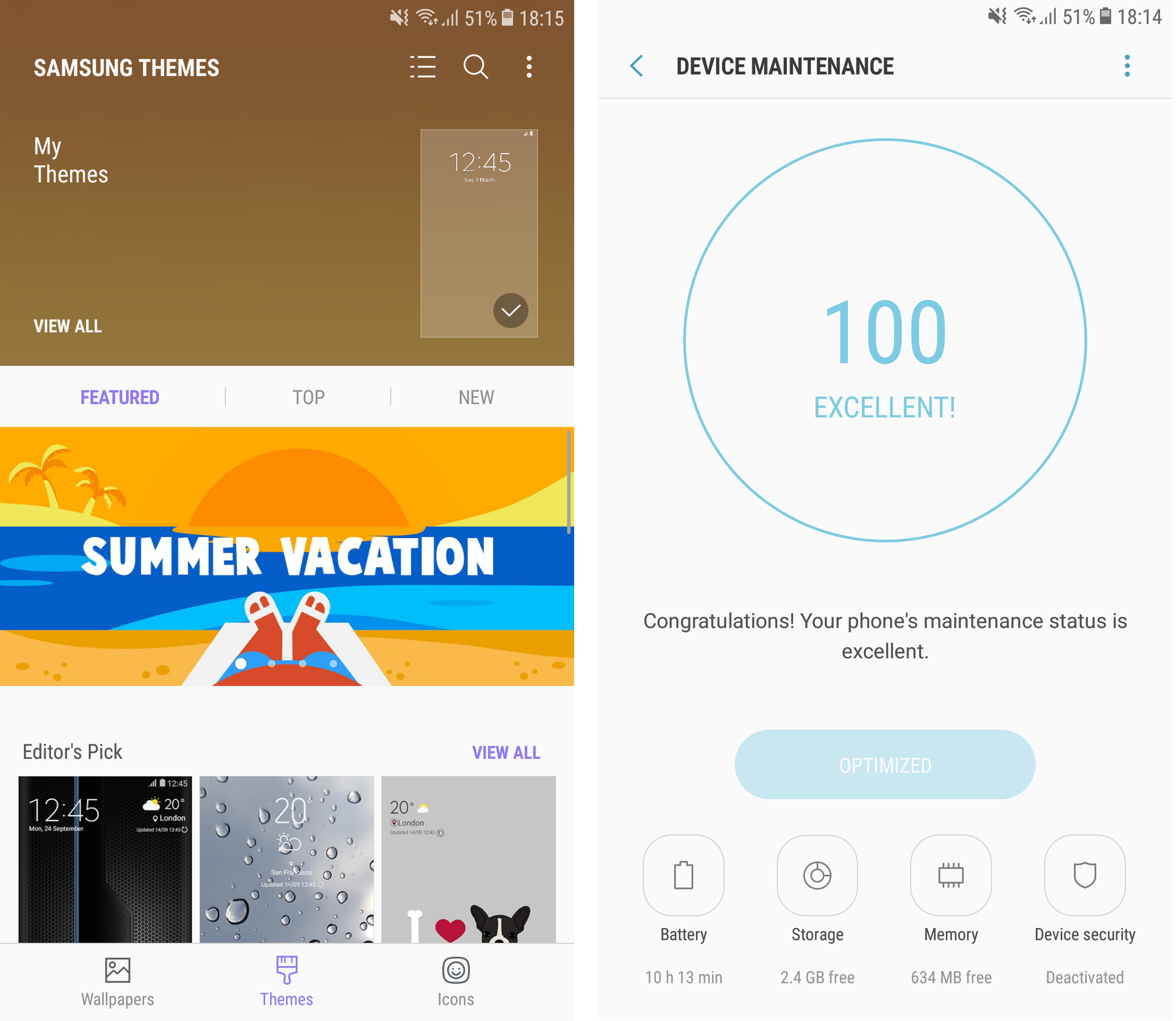
Performance and battery life
With 1.6GHz octa-core Exynos 7870 and 3 GB of RAM, Samsung Galaxy J7 Pro falls right in the middle of the spec sheet spectrum. Exynos 7870’s performance is approximately equivalent to a Qualcomm Snapdragon 635 and the benchmark results provide credence to this belief. Here’s the result from AnTuTu benchmarking application:
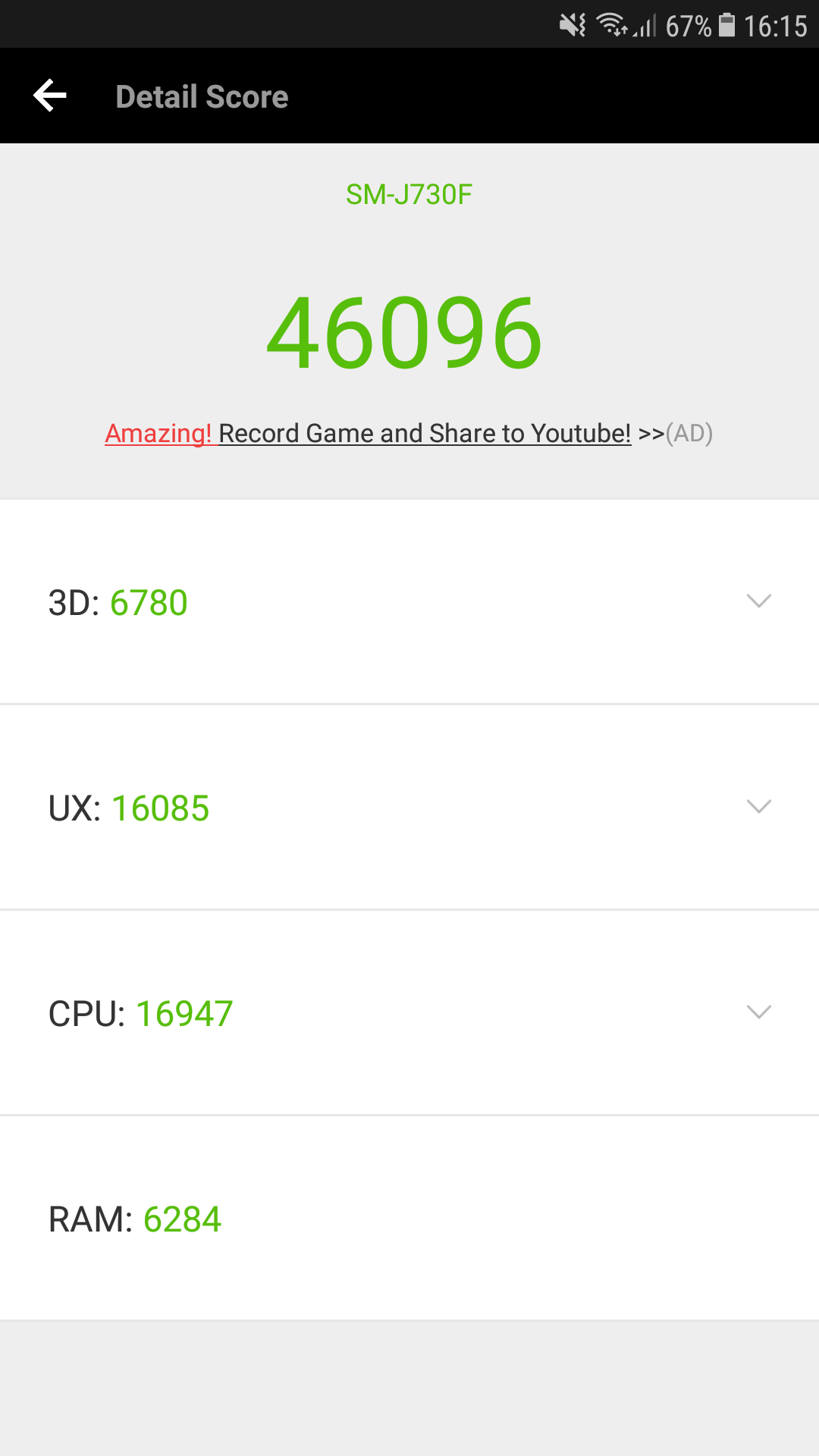 With that mid-range CPU and Mali-T830MP2 GPU, J7 pro performs admirably well for nearly all day to day tasks. The software runs smoothly and during my week long usage, never once did I face any kind of slowdown, no matter how many apps were open in the background. Most games run absolutely fine with no issue with framerate. Some very high-end titles might stress the hardware a bit but it goes through most graphically demanding titles like a champ. Here are the results from the Geekbench application:
With that mid-range CPU and Mali-T830MP2 GPU, J7 pro performs admirably well for nearly all day to day tasks. The software runs smoothly and during my week long usage, never once did I face any kind of slowdown, no matter how many apps were open in the background. Most games run absolutely fine with no issue with framerate. Some very high-end titles might stress the hardware a bit but it goes through most graphically demanding titles like a champ. Here are the results from the Geekbench application:
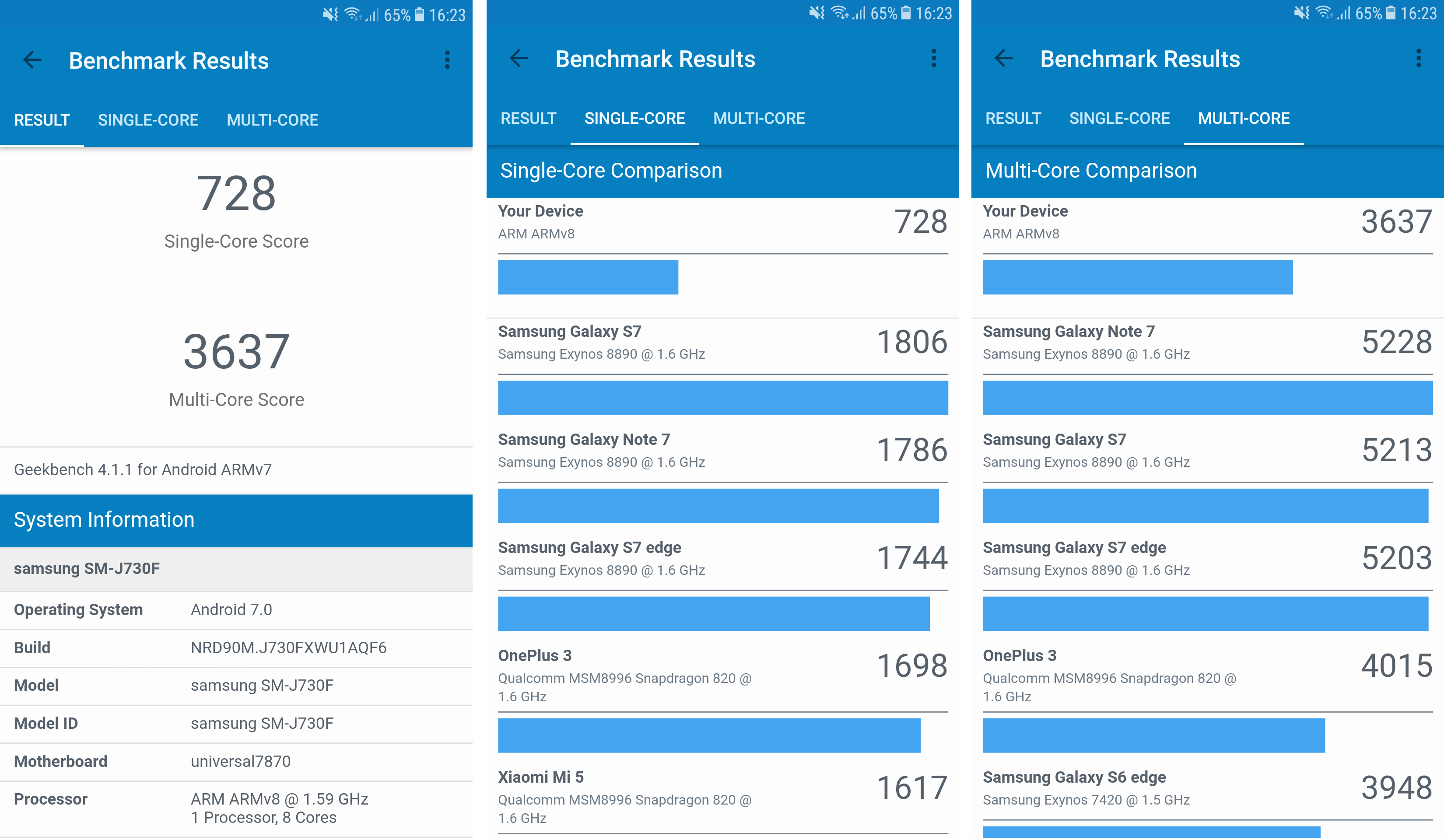 One thing to note is that the review unit which I received had only 16 GB of internal storage. This didn’t prove to be enough for normal usage as I was reminded again and again by the operating system that I was running out of storage capacity. In my opinion, keeping in view the ‘Pro’ title of the device, it would have been better to provide at least 32 GB of internal storage in the base model.
One thing to note is that the review unit which I received had only 16 GB of internal storage. This didn’t prove to be enough for normal usage as I was reminded again and again by the operating system that I was running out of storage capacity. In my opinion, keeping in view the ‘Pro’ title of the device, it would have been better to provide at least 32 GB of internal storage in the base model.
Coming towards the 3,600 mAh battery that provides juice to all that hardware, it seems like a perfect amount to run a 1080p screen and a power efficient Exynos 7870 processor. The real life tests agree with this initial observation and J7 Pro exhibits excellent battery life during any type of usage scenario. With the constant connection to either a wireless network or HSPA+ data network, streaming videos, casual gaming and mid to high-level social media usage, I was easily able to make the device last a whole day on a single charge. The screen on time during my usage was always in excess of 7 hours.
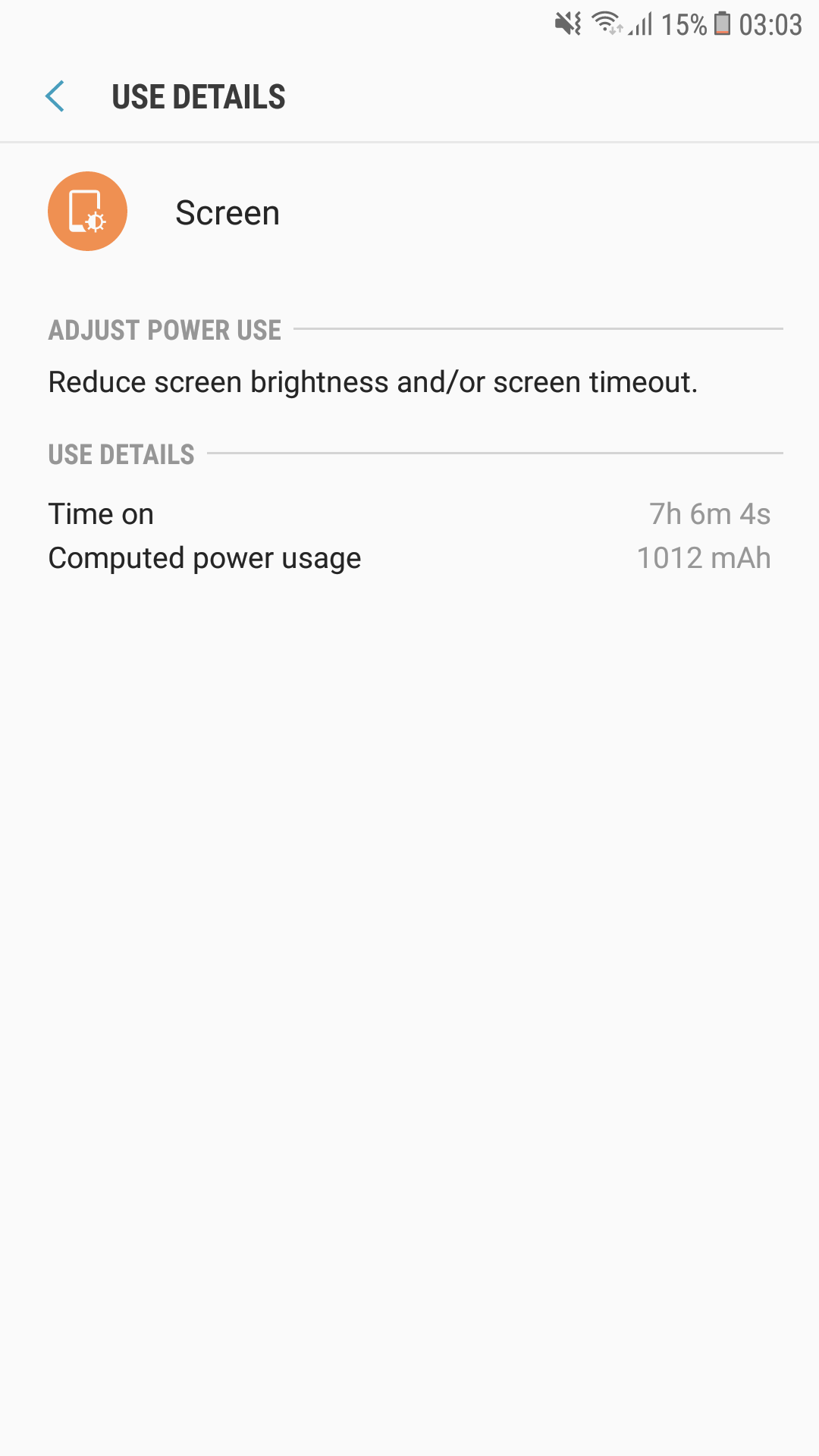 Unfortunately, Samsung Galaxy J7 Pro does not support fast charging. The charger provided in the box is a simple 5V/1.5A charger and tests show that it charges by drawing about 1.3 to 1.4 Amperes from the wall socket. This means that if you are in a hurry, you won’t be able to quickly fill up the juice in 10-15 minutes. It takes about 2 hours for J7 Pro to get fully charged from a 10 percent battery level.
Unfortunately, Samsung Galaxy J7 Pro does not support fast charging. The charger provided in the box is a simple 5V/1.5A charger and tests show that it charges by drawing about 1.3 to 1.4 Amperes from the wall socket. This means that if you are in a hurry, you won’t be able to quickly fill up the juice in 10-15 minutes. It takes about 2 hours for J7 Pro to get fully charged from a 10 percent battery level.
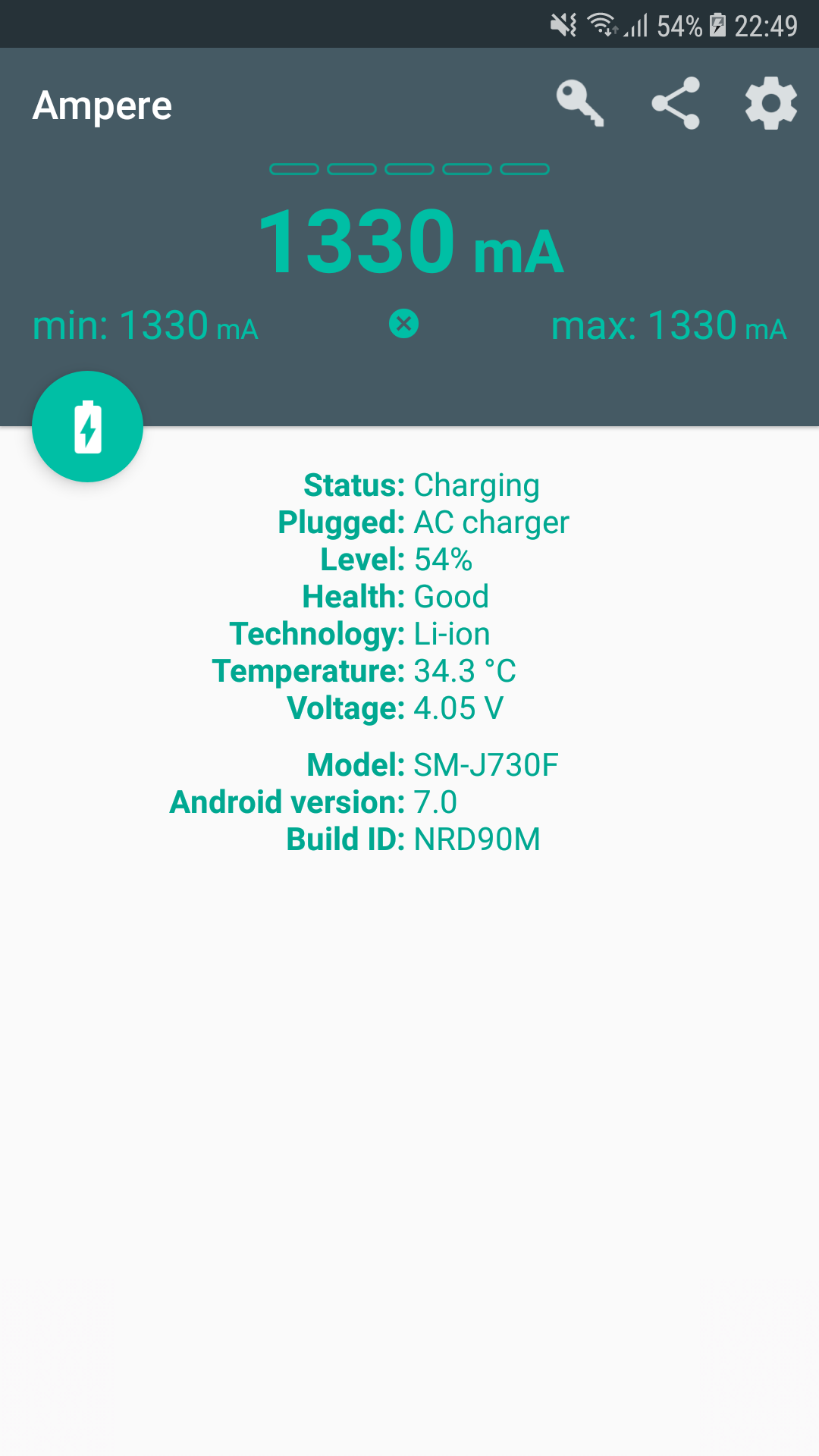
Camera
Apart from good build quality and displays, another thing which Samsung phones are known for is their brilliant cameras. Samsung makes on of the best smartphones cameras in the market and this phone is no exception. It features 13 MP sensors on both sides of the device. The primary camera has a f/1.7 aperture while the secondary camera has a f/1.9 aperture.
 Both cameras are pretty good for what they are meant to do. Pictures taken from the back camera are rich in details, have a good color composition and the noise is kept minimal due to good post processing of shots taken. Sometimes the shots taken during day time might seem a little too dark but it can be easily remedied by using the pro mode of the camera application.
Both cameras are pretty good for what they are meant to do. Pictures taken from the back camera are rich in details, have a good color composition and the noise is kept minimal due to good post processing of shots taken. Sometimes the shots taken during day time might seem a little too dark but it can be easily remedied by using the pro mode of the camera application.
The front facing camera, although is boasting the same 13M pixel count, is obviously nowhere close to back camera in quality. It is a fixed focus selfie camera which performs very well for self-portraits and group pictures. There is also a beauty mode which helps to enhance skin tone, eye size, and the face size. Overall, the camera performance of J7 Pro is satisfactory and most users will be more than happy with the pictures taken through the device.
Conclusion
We can take apart the review of a device and talk about its individual features at length, but it still won’t answer a simple question. Is the device worth the customer’s investment? That portion isn’t complete unless we weigh the features and specifications against the asking price. In Galaxy J7 Pro’s case, Samsung’s asking price is 36,999 PKR. Although the device has a very good camera, brilliant screen, premium design and consistently good battery life, it seems a little overpriced according to the current market trends. Add to it the fact that the base model comes with only 16 GB of internal storage, it seems that Samsung, as it has done so in the past, has overpriced the mobile a bit. Check out the prices of all Samsung smartphones in Pakistan.
Of course, this analysis is based on purely the experience provided by the device itself and doesn’t factor in the added cost of the Samsung brand which matters a lot to many customers while purchasing a new device. So ultimately, given all the pros and cons, the final decision is going to be of the consumer that whether this device is worth their hard earned money or not.
Read Also:
